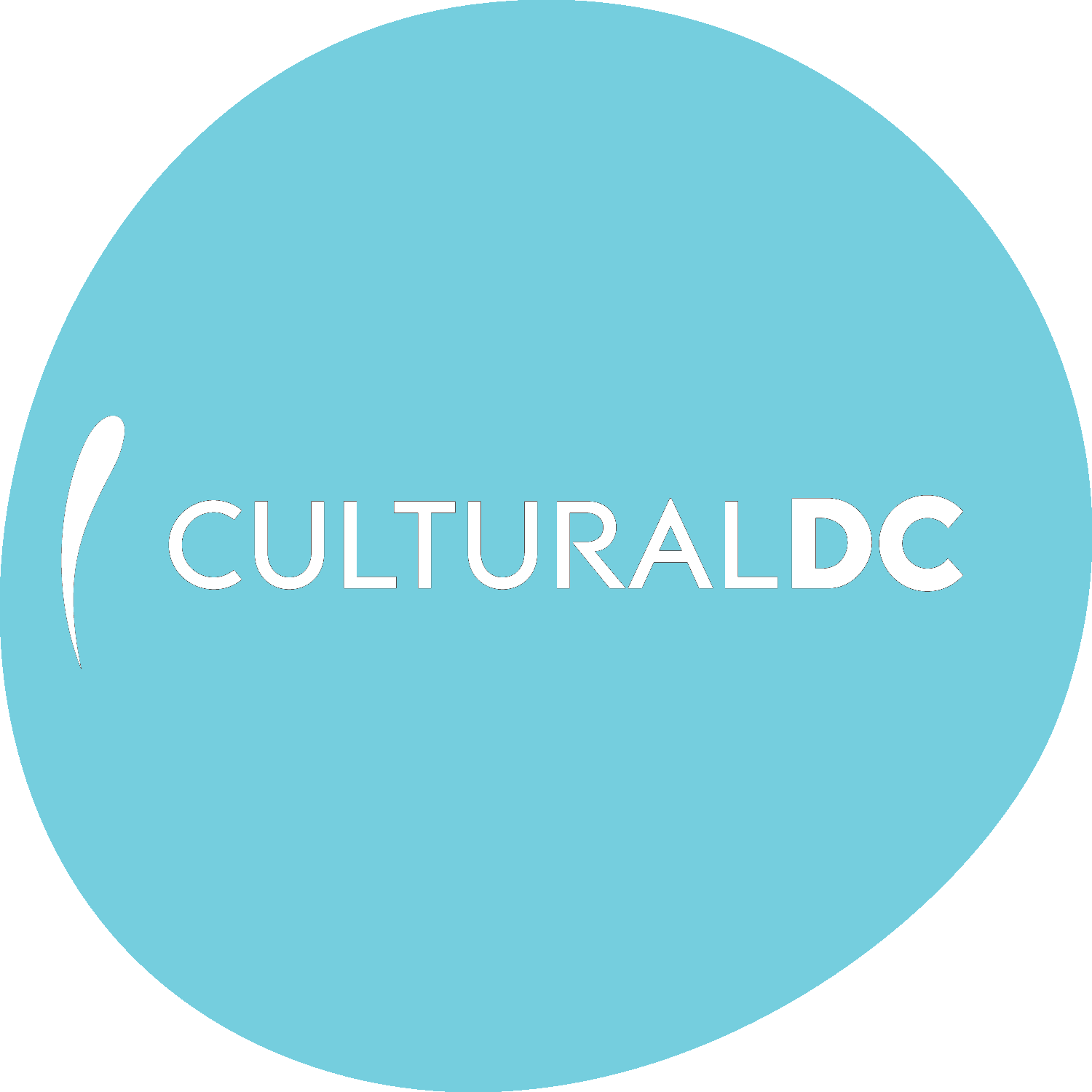est. 1998
About CulturalDC
Mission and Values
CulturalDC supports innovative artists across all disciplines and makes their work accessible to diverse audiences. We provide unconventional space for relevant and challenging work that is essential to nurturing vibrant urban communities.
Our driving values include: equity, inclusivity, people, transparency, diversity, collaboration, cultural competency, accountability, intentionality, investing resources, accessibility, safety, and relevancy.
We strive to “Make Space for Art”.
History
We have brokered over 300,000 square feet of space for artists and arts organizations. We work with real estate developers, artists, city officials, residents and other key stakeholders through creative placemaking initiatives, community-centered engagements, and innovative real estate partnerships that have resulted in the creation of Atlas Performing Arts Center, Source Theatre, Brookland Arts Lofts, and the 27 artist studios at Monroe Street Market in Brookland.
Through 2017, at our spaces Flashpoint and Source, we created the platforms that deliver art to thousands of residents across the region. Visual artists made headlines at Flashpoint Gallery and performing artists gained new followings at the Mead Theatre Lab at Flashpoint. During Source Festival, 300 members of the creative community joined forces to create 3 weeks of new work, including 18 10-minute plays, three full-length plays and four Artistic Blind Dates. We also spearheaded creative placemaking initiatives through art space development, public art and artist housing.
Founding
In December 1996, as the downtown sports and entertainment industry began to pick up steam, the Downtown Arts Committee (an outgrowth of the Mayor’s Interactive Downtown Task Force) reinvigorated efforts to advance the role of arts and culture in the revitalization of Downtown DC. In January 1998, the Downtown Arts Committee, sponsored by the Federal City Council and funded with a grant from the Cafritz Foundation, engaged over 150 local leaders in a participatory process to develop a common vision with achievable goals.
The vision that ensued highlighted Washington as the cultural heart of the region— a vibrant and creative center that blends culture, arts, technology, commerce, retail, entertainment, education, and entrepreneurship in a world-class environment. With the support of the White House, the federal government, the District government, the international community, and local business interests, this process culminated in an agenda presented May 5, 1998 at an arts summit hosted by First Lady Hillary Rodham Clinton. The recommendations were designed to increase and sustain the presence and appreciation of arts and culture in Downtown Washington, and to provide places and spaces for artists and arts organizations to live, create, exhibit, sell, rehearse, perform, convene, and animate.
One overriding recommendation was to charter a private, nonprofit, autonomous entity—with city and federal recognition and in cooperation with the Downtown BID—in the model of a community development corporation, to implement the Recommended Action Plan. This unique hybrid, dubbed a Cultural Development Corporation was envisioned to:
1. facilitate city-wide (as well as downtown) arts and cultural development in conjunction with the network of neighborhood-based community development corporations; and
2. advocate for arts and cultural investment to benefit Washington-based artists and arts organizations and the neighborhoods where they reside.
